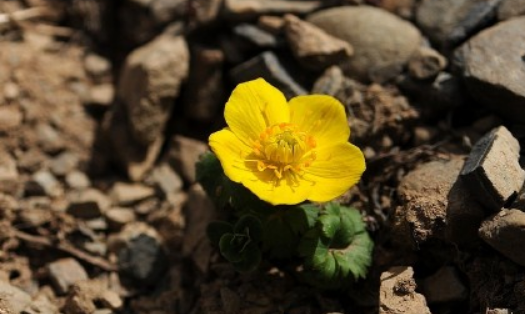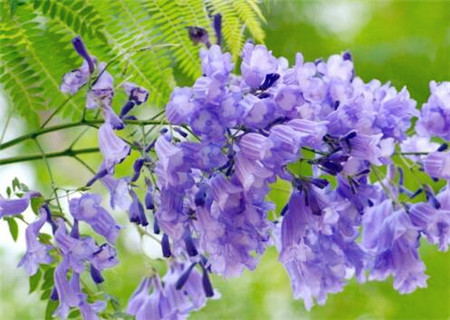What are the breeding methods and points for attention of Ophiopogon japonicus in Liliaceae? What are the main values? What are the medicinal effects?
Ophiopogon japonicus is a perennial evergreen herb of Liliaceae. Ophiopogon is native to China and is also distributed in Japan, Vietnam and India. It is cultivated in southern China and other places. So what do you know about the breeding methods and points for attention of Ophiopogon japonicus? What are the main values? What are the medicinal effects?

I. Culture methods and points for attention of Ophiopogon japonicus
1. Culture methods of Ophiopogon japonicus.
Ophiopogon japonicus is harvested and planted. When we plant Ophiopogon japonicus, we usually choose sunny evenings or cloudy days when the sun is not too strong. We only need to plant the seedlings of Ophiopogon japonicus on the prepared soil, pay attention to planting the seedlings as perpendicular to the ground as possible, trample the soil tightly after planting, so that the roots of Ophiopogon japonicus are closely combined with the soil, and then water and plant immediately.
After planting good seedlings, it will take about 15 days to confirm survival, at this time we have to loosen the soil and weed once. Since then, a sunny day will be selected for weeding every month.
Ophiopogon needs more fertilizer, we should reasonably fertilize Ophiopogon japonicus, generally apply fertilizer three times a year, choose to apply fertilizer in July, August and November.
Ophiopogon japonicus also needs a large amount of water, so it should be watered in time. Ophiopogon prefers cool and humid environment, so we should pay attention to its shady work when we plant Ophiopogon.
2. Matters needing attention in planting Ophiopogon.
The water demand of Ophiopogon japonicus is very large in the growing period, and increasing the amount of water in the growing period is helpful to the expansion of Ophiopogon japonicus tuber.
Ophiopogon japonicus also needs sufficient light, the tuber expansion period of light is very important, this period must be given sufficient sunlight.
Ophiopogon japonicus also has special requirements for the soil. Ophiopogon japonicus should be planted in sandy soil with good drainage and sufficient fertility, the soil should be kept in slightly alkaline pH, and the soil viscosity should not be too high, which is conducive to the growth of Ophiopogon japonicus tubers.
2. What are the main values of Ophiopogon japonicus
1. The function of garden.
Although Ophiopogon has no delicate and beautiful flowers, the flowers of Ophiopogon are very simple lilac, but Ophiopogon is very easy to grow, and Ophiopogon is evergreen all the year round, very cold-resistant and drought-tolerant, on the other hand, Ophiopogon is not prone to diseases and insect pests, so it is very suitable for urban green plant. In addition, although the common variety of Ophiopogon japonicus is not handsome, it has gradually cultivated a new variety of Ophiopogon japonicus with higher ornamental value in recent years, which is more suitable for ornamental garden.
2. Economic value
The tuber of Ophiopogon japonicus has many functions, and it is a kind of more valuable Chinese herbal medicine, so it is a kind of economic crop with high value and has a wide range of functions in traditional Chinese medicine. It has a certain economic value.
3. Medicinal value
In traditional Chinese medicine, the nature of Ophiopogon japonicus is sweet, slightly bitter and slightly cold. Ophiopogon japonicus has the effect of nourishing the lungs. Ophiopogon japonicus can moisten the lungs and clear the heart, resolve phlegm and relieve cough, and inhibit vomiting. The Compendium of Materia Medica holds that Ophiopogon japonicus is an excellent medicine for nourishing yin and moistening the lungs. Ophiopogon can also nourish the stomach, if there is anorexia, you can also use Ophiopogon to eat as an appetizer.
Ophiopogon is generally used to treat lung dryness and cough, upset insomnia, intestinal dryness and constipation and other symptoms. Ophiopogon also has a good effect on the prevention and treatment of cardiovascular and cerebrovascular diseases. Ophiopogon can reduce blood sugar and anti-arrhythmia, which is very good for the elderly. But Ophiopogon japonicus can not be taken for a long time, it is easy to have side effects and should be taken under the guidance of a doctor.
What are the medicinal effects of Ophiopogon japonicus
Medicinal uses of Ophiopogon japonicus:
There is an introduction to Ophiopogon in the Classic of Shennong Materia Medica. In traditional Chinese medicine, it is generally believed that Ophiopogon is sweet, slightly bitter and cold, and long-term and moderate consumption can prolong life and strengthen the body.
Main symptoms of Ophiopogon japonicus:
Ophiopogon japonicus has the effect of stopping vomiting and digestion, calming the mind and calming qi, as well as tonifying the blood and kidney and strengthening the body. In addition, it plays a role in maintaining the cardiovascular, lungs, stomach and other important organs of the human body. It has a good effect on lung disease, myocardial infarction, kidney deficiency, diabetes, summer heat injury to the stomach and other diseases in children.
The edible method of Ophiopogon japonicus:
1. Codonopsis Ophiopogon lean meat soup
Wash Codonopsis pilosula, Radix Rehmanniae, red jujube and Ophiopogon, wash pork and cut into pieces, add proper amount of water, boil over high heat and cook soup over low heat for 1 hour. According to your taste, add the right amount of seasoning.
Codonopsis Ophiopogon lean meat soup has the effect of nourishing yin and nourishing stomach.
two。 Wheat winter porridge
Put Ophiopogon japonicus and ginger. After the raw Rehmannia glutinosa is washed, soak in the amount of water that has just passed the noodle, mash the ingredients after absorbing water, and wrap them with clean gauze.
Squeeze the gauze bag to extract juice and set aside.
Put the rice and Coix kernels into the pot to cook porridge, pour in the juice squeezed out before, and continue to cook. If you think it is too complicated, you can also directly mash Ophiopogon and ginger and put them into a pot to boil together.
Time: 2019-03-16 Click:
- Prev

The taboo of Ranunculus trollius to drink in water? How to water and fertilize? How do you plant seeds?
Trollius is a plant of the genus Trollius of Ranunculaceae, which is a kind of toxic Chinese herbal medicine, so it is taboo to drink Trollius in water. How to water and fertilize? How do you plant seeds? According to the data, when drinking Trollius, you should be careful not to drink too much. It is a third of the poison.
- Next

How much is the seed price per jin of blue flowers? How many years does it blossom? When will it bloom?
Blue blossom, deciduous trees of the family Liriodendron, up to 15 meters high. Native to South America and Brazil, it has been introduced and cultivated in China for ornamental use in recent years. So how much is the seed price per jin? How many years does it blossom? When will it blossom? How much is the blue flower seed per jin? The general price is about 60
Related
- Fuxing push coffee new agricultural production and marketing class: lack of small-scale processing plants
- Jujube rice field leisure farm deep ploughing Yilan for five years to create a space for organic food and play
- Nongyu Farm-A trial of organic papaya for brave women with advanced technology
- Four points for attention in the prevention and control of diseases and insect pests of edible fungi
- How to add nutrient solution to Edible Fungi
- Is there any good way to control edible fungus mites?
- Open Inoculation Technology of Edible Fungi
- Is there any clever way to use fertilizer for edible fungus in winter?
- What agents are used to kill the pathogens of edible fungi in the mushroom shed?
- Rapid drying of Edible Fungi

